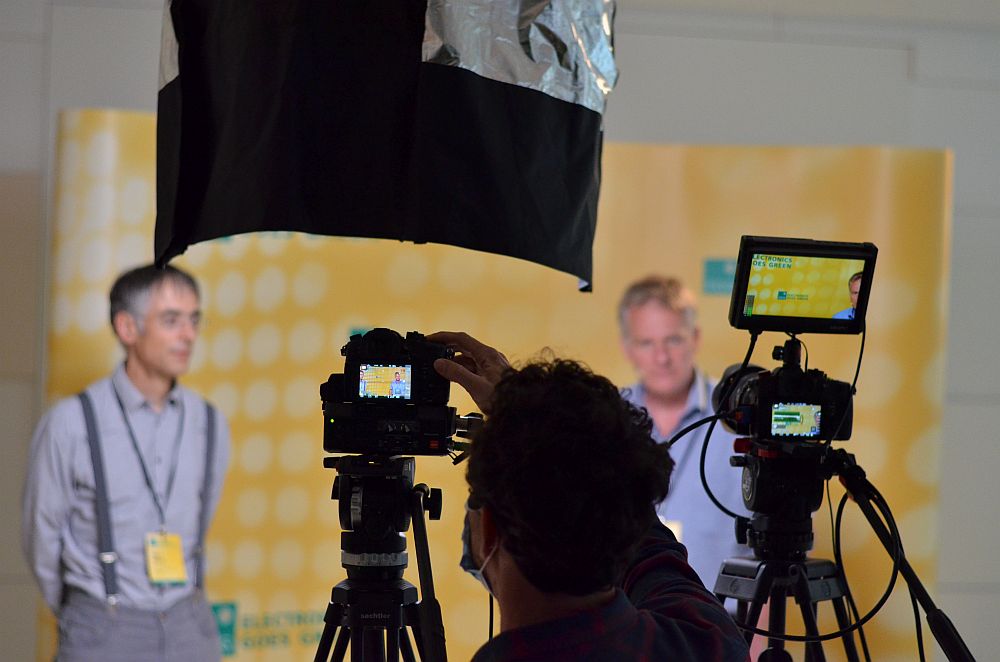Review of the Electronics Goes Green 2020+ Conference


© Fraunhofer IZM
More and more companies are now focusing on sustainable management and production. At the Electronics Goes Green 2020+ tech giants like Apple and Philips presented their sustainability programs and how they are planning to reach those goals.
For the sixth time, the Fraunhofer Institute for Reliability and Microintegration IZM organized the world’s largest conference on sustainability in electronics, which had to be held online for the first time due to the Covid-19 pandemic. Prof. Dr. Martin Schneider-Ramelow, President of IMAPS Germany, celebrated his premiere as Chairman and pointed out the topicality of the conference. Circularity, digitalization and carbon neutrality are the most important developments that bring the participants together once again for this conference.
250 participants had the opportunity to watch pre-recorded presentations on an online platform created especially for the conference and to participate in a virtual live event on September 1, 2020. Eelco Smit, Senior Director Sustainability at Philips, opened the live event with his keynote speech on “Best Practices in Sustainability – what can we learn?”. In his presentation he introduced the Philips Sustainability Program, which is developed every five years. For example, by the end of 2020, 15% of total revenue is expected to come from circular products and 70% from solutions that meet eco-design requirements. The company also aims to become carbon neutral by the end of the year by purchasing 100% renewable electricity and recycling 90% of its waste products.
In the afternoon, Sarah Chandler, Senior Director of Operations Product Development and Environmental Initiatives, presented Apple’s roadmap up to 2030 and explained that the company wants to achieve zero CO2 emissions in the manufacture of its products in ten years at the latest. Apple is already using renewable energy in offices, data centers and its own production facilities. Now also the the production abroad should switch to renewable energies.
In addition to the two keynotes, the live day featured six interactive sessions and an exciting panel discussion on the topic of “Recycling as circular ecomomy!?” Even the exchange and networking with like-minded participants was possible thanks to numerous options on the online platform.
In the end, Technical Chair Nils F. Nissen showed himself confident to integrate green electronics more strongly into company processes. However, he also pointed out that there is still a lot of work to do. It seems there will certainly be no shortage of topics for discussion at the next conference in four years.